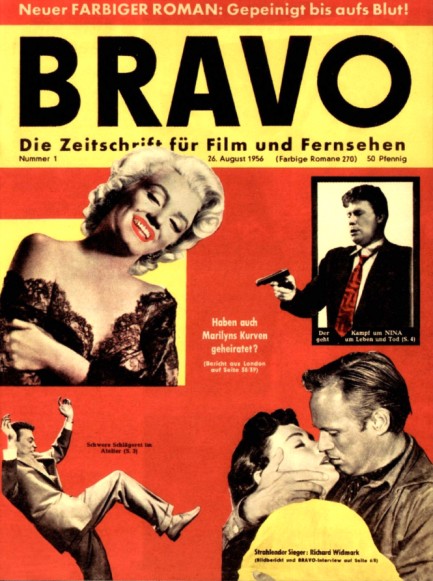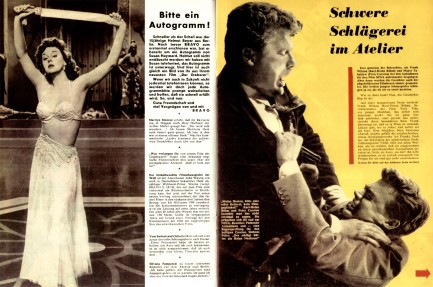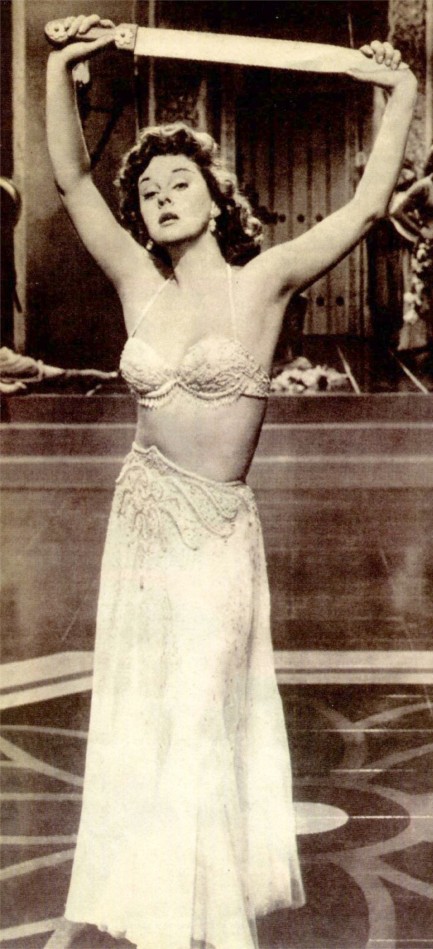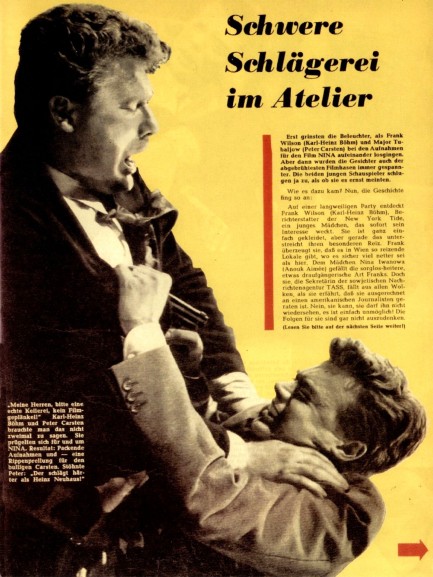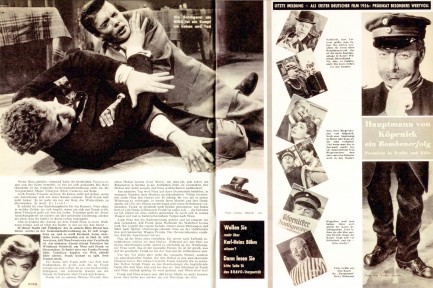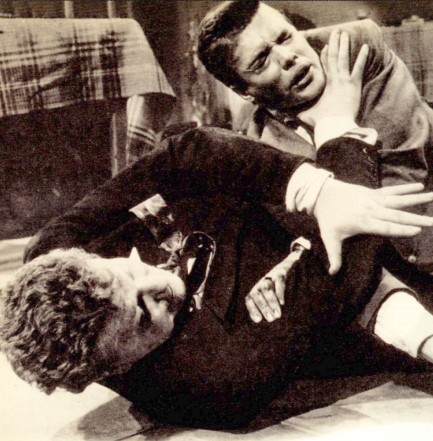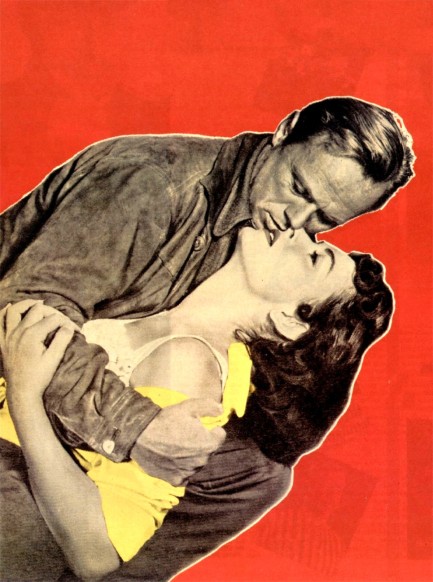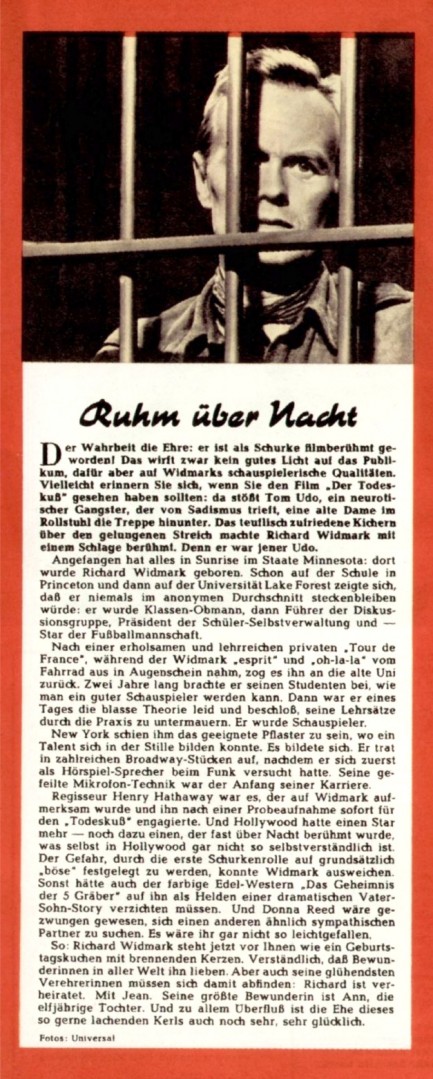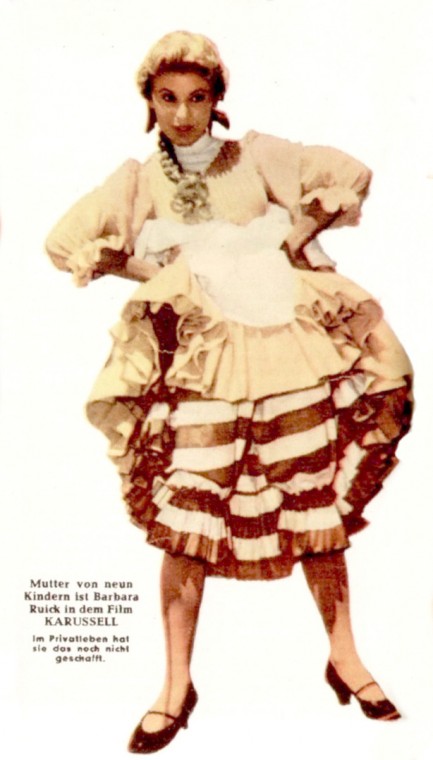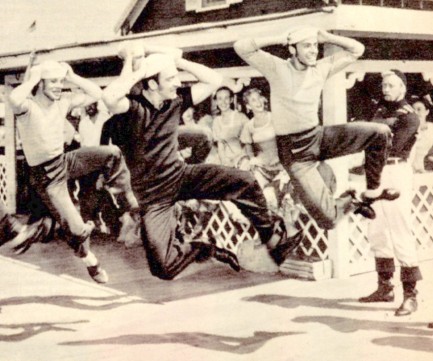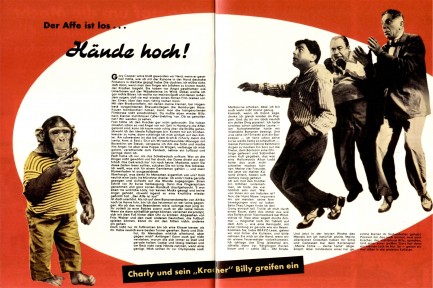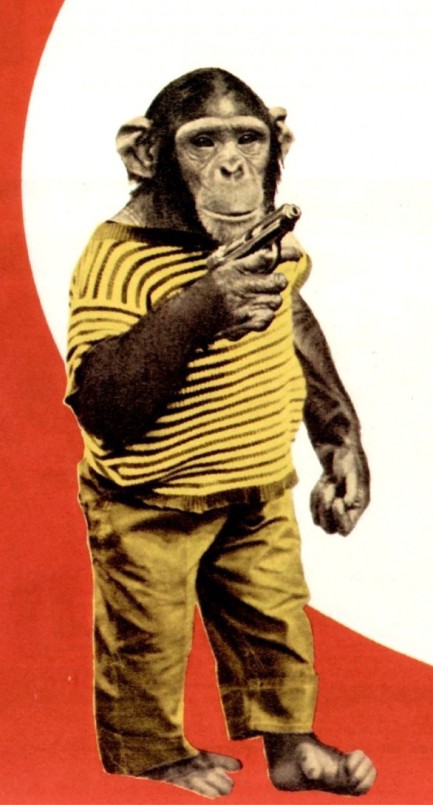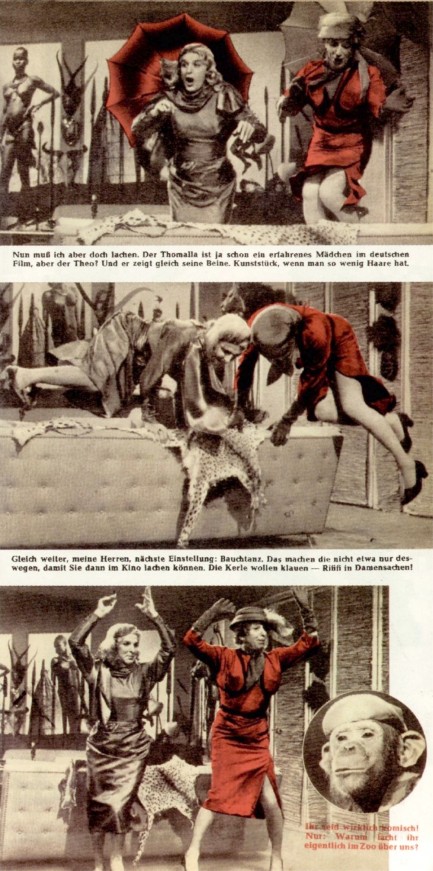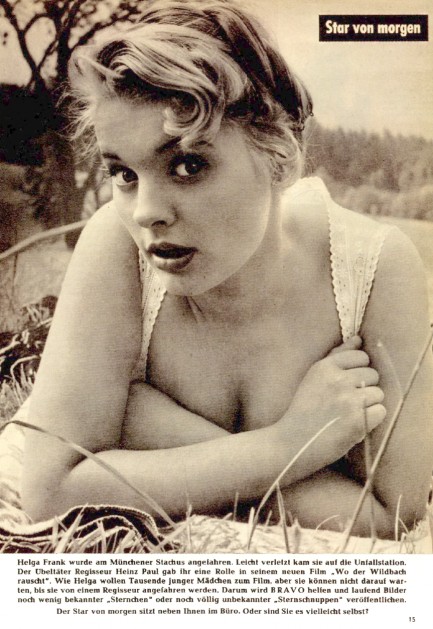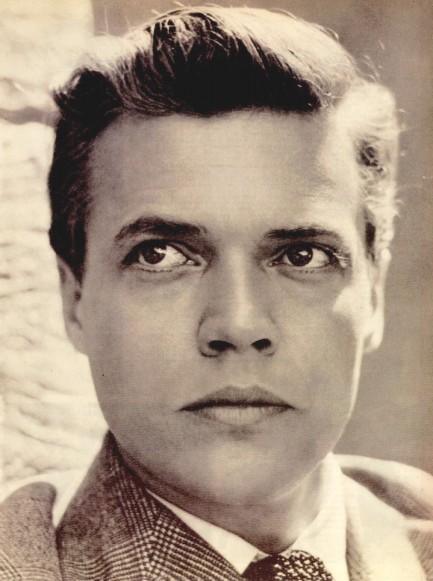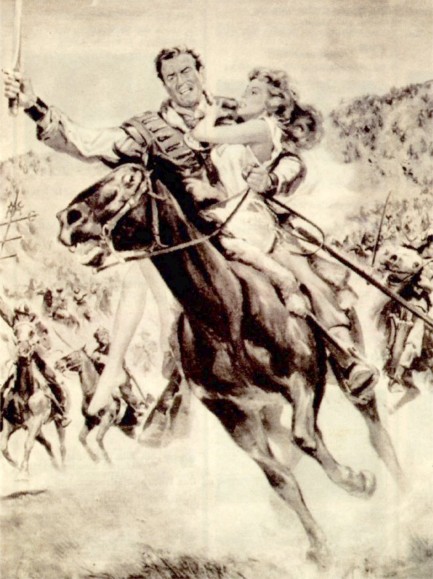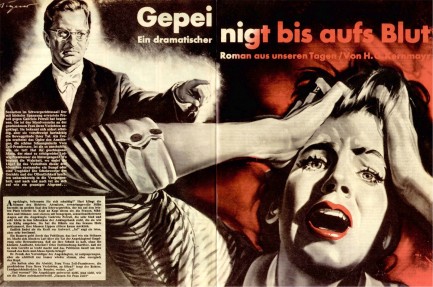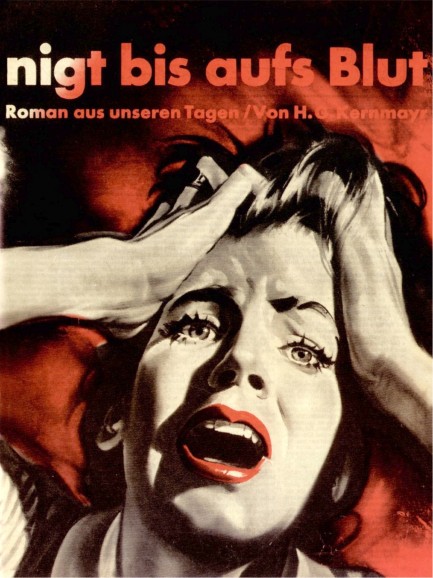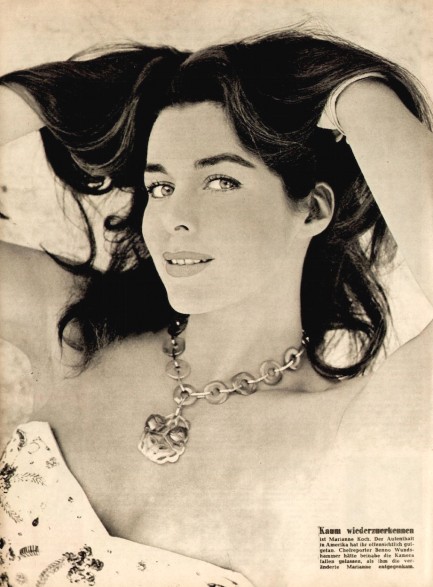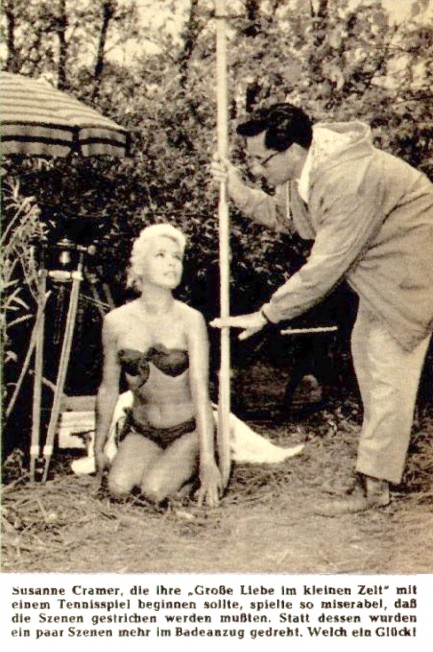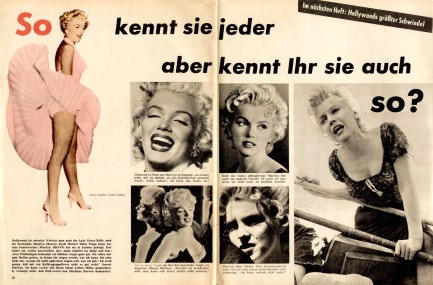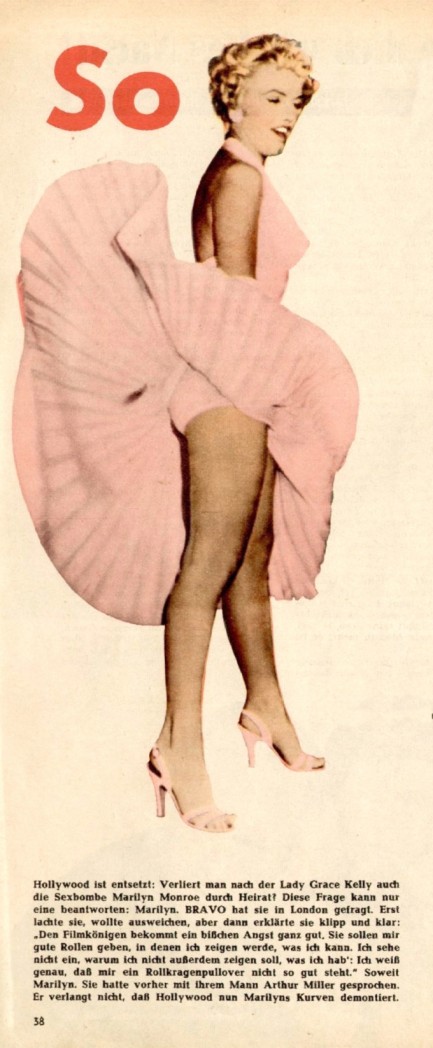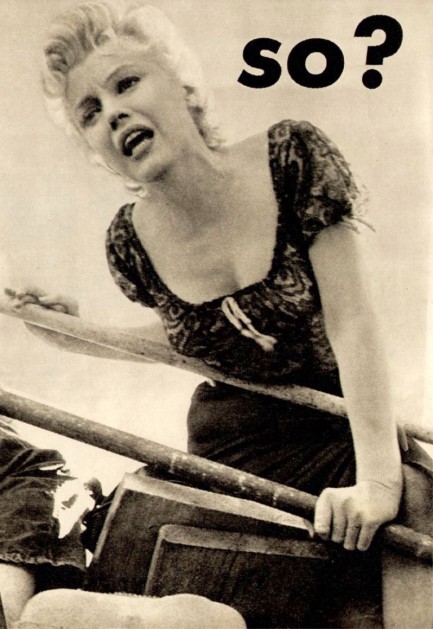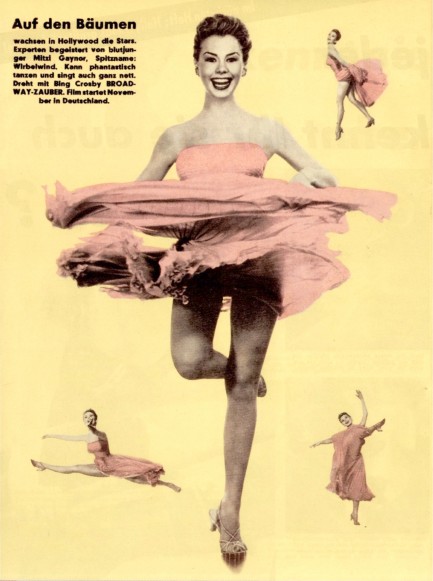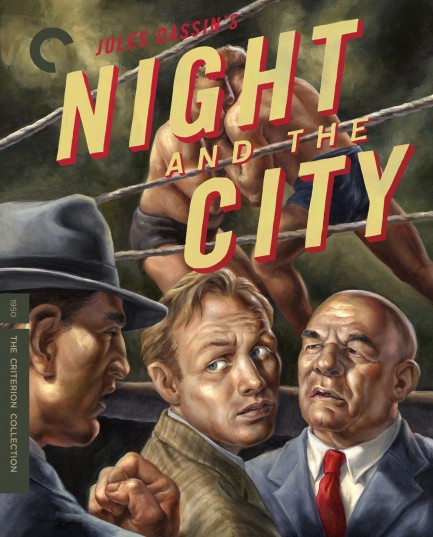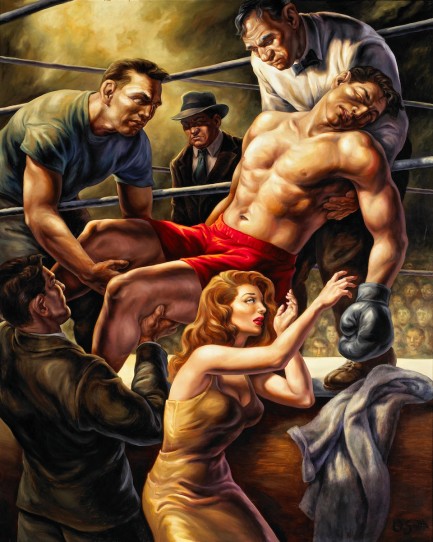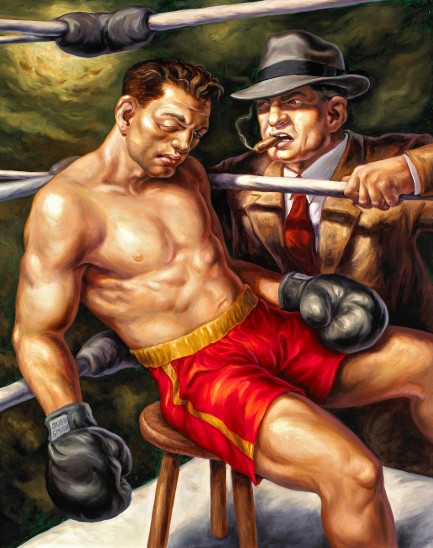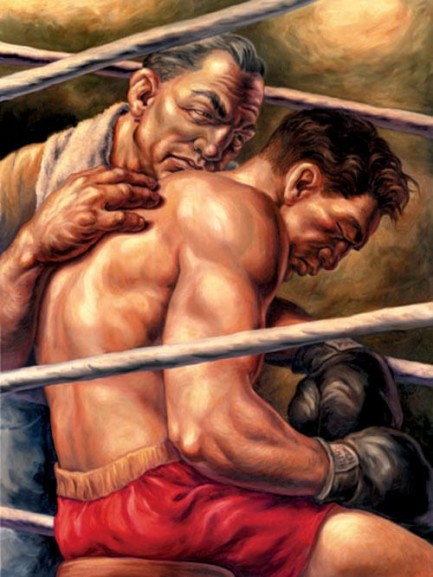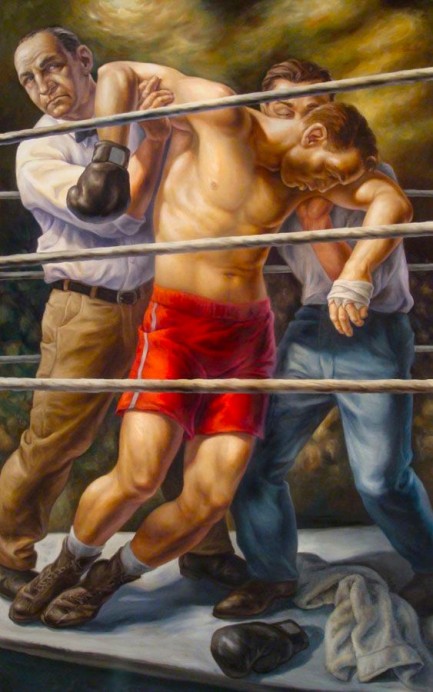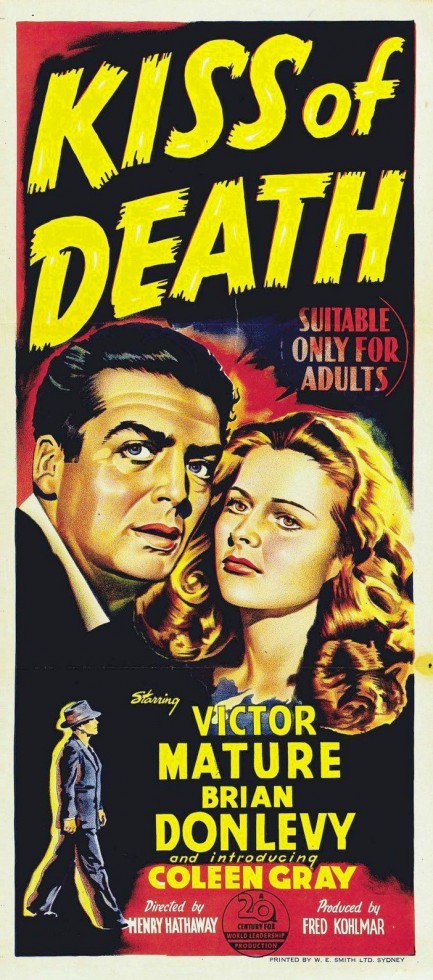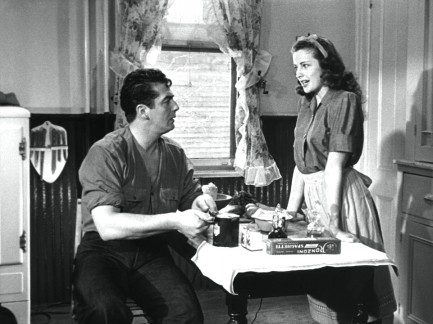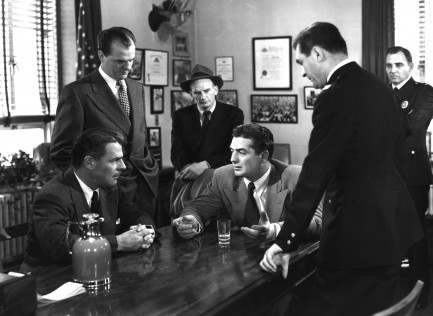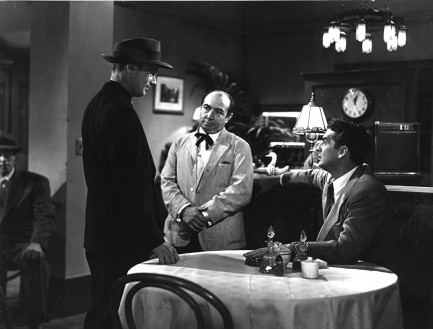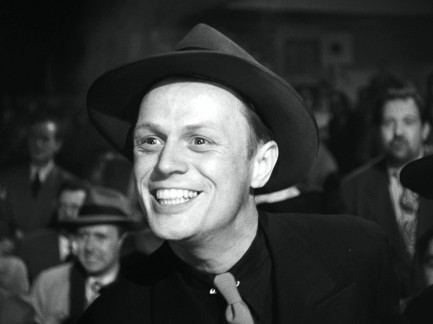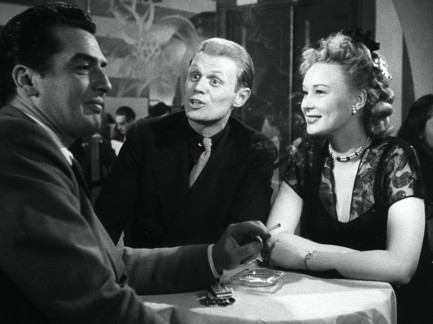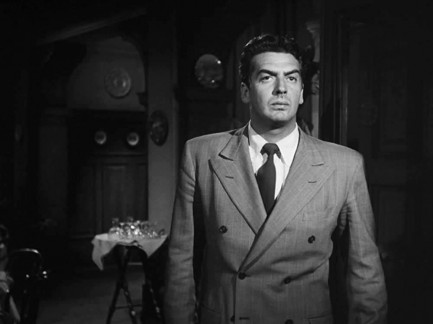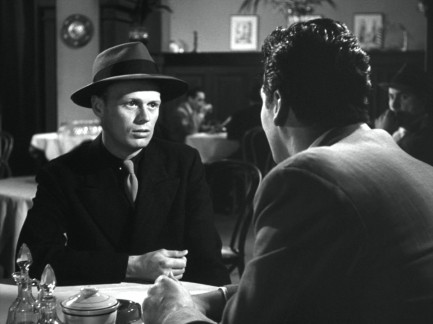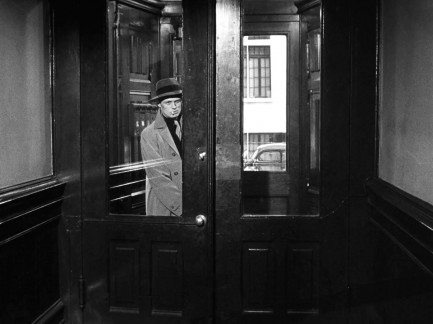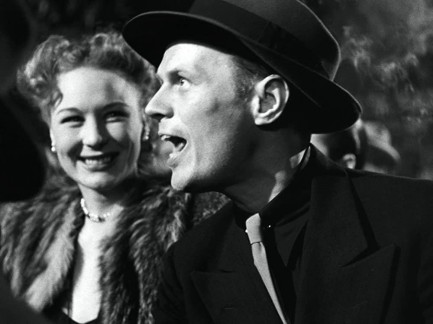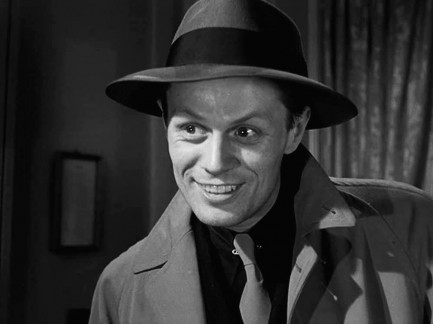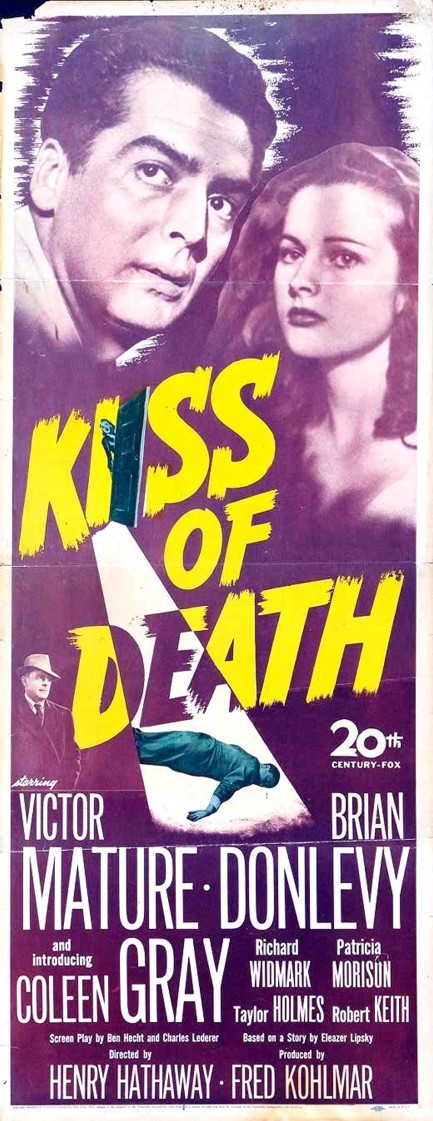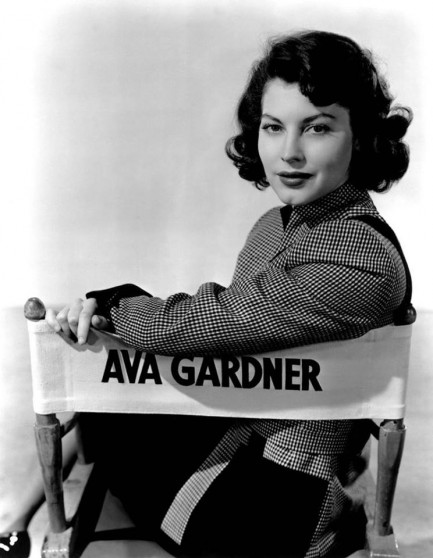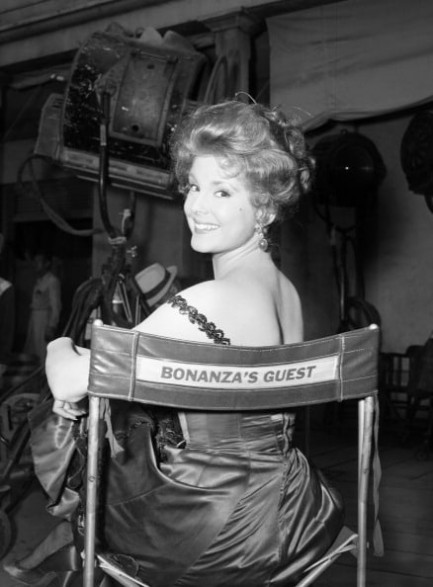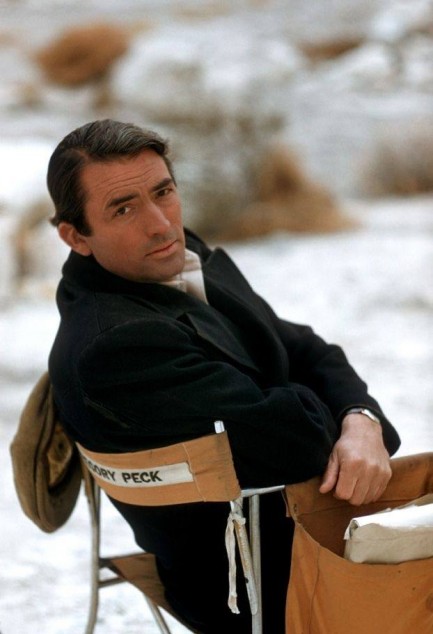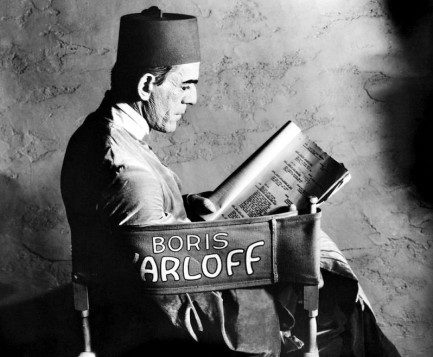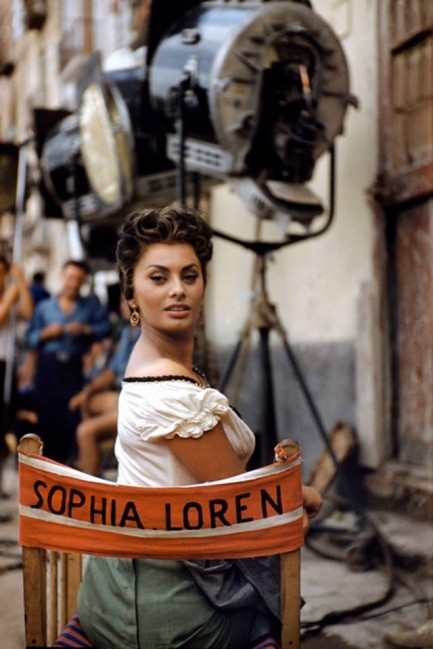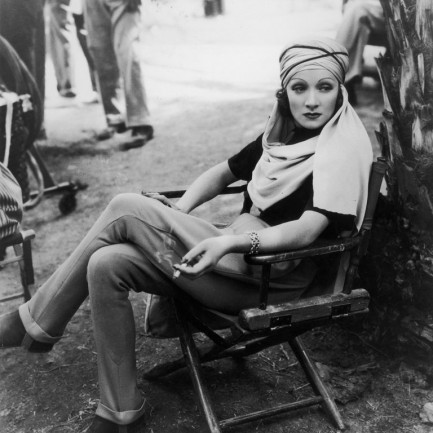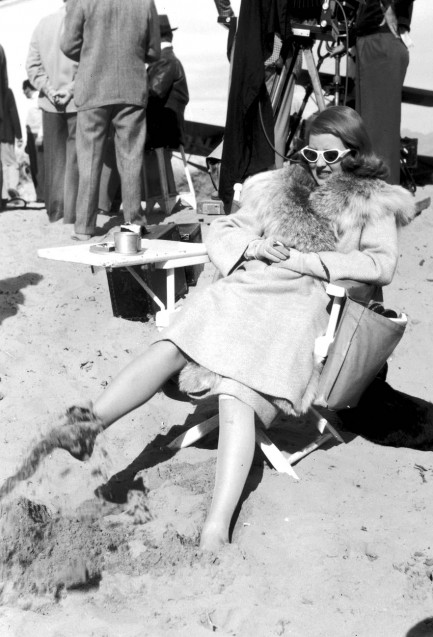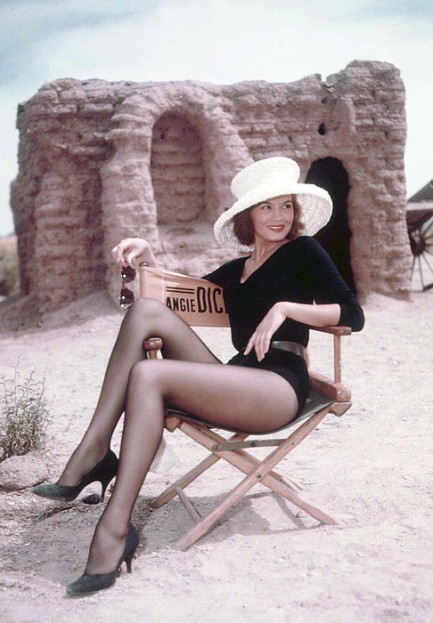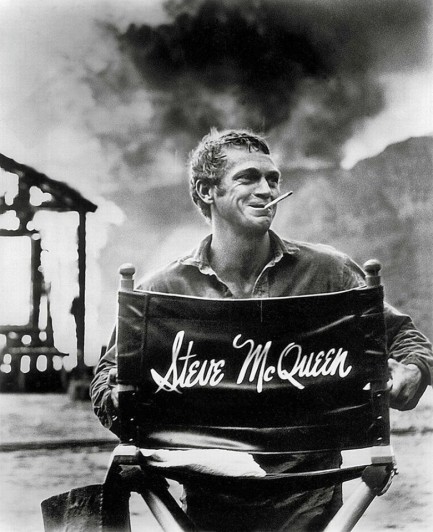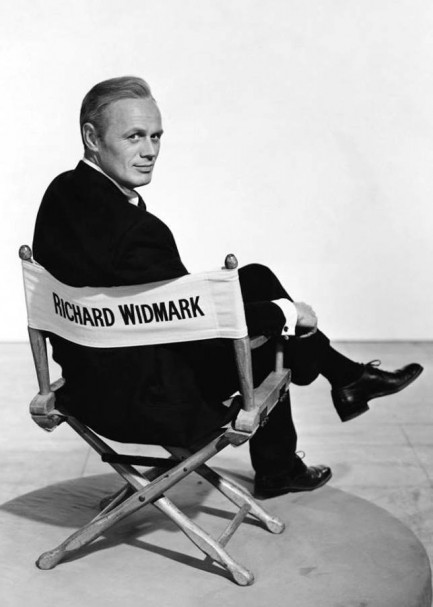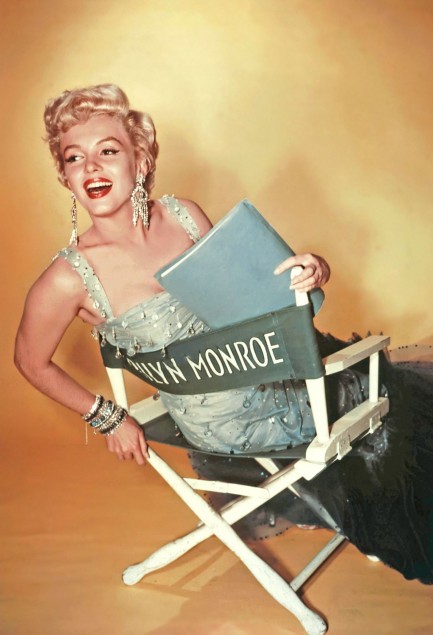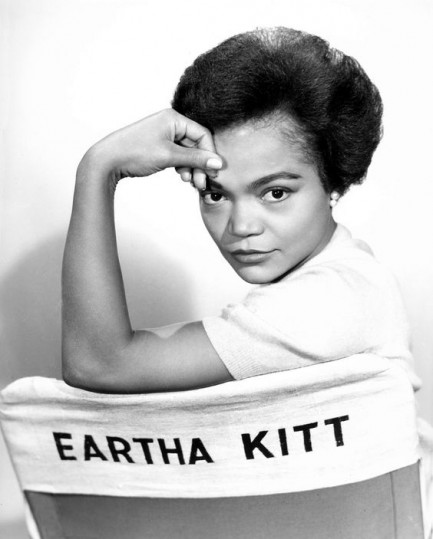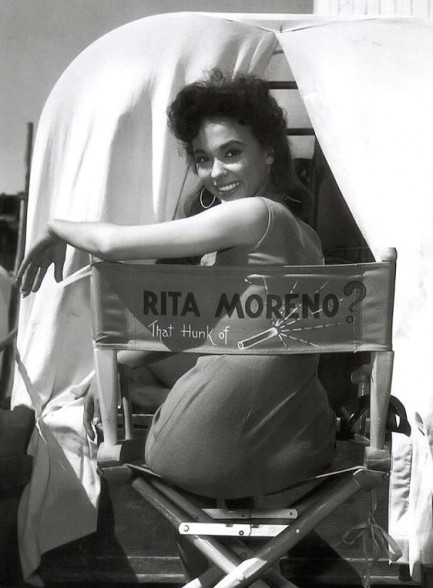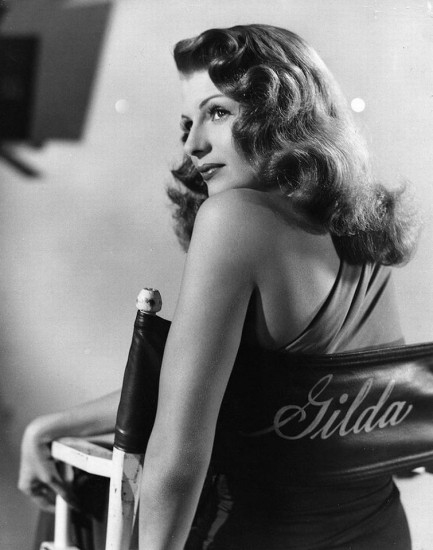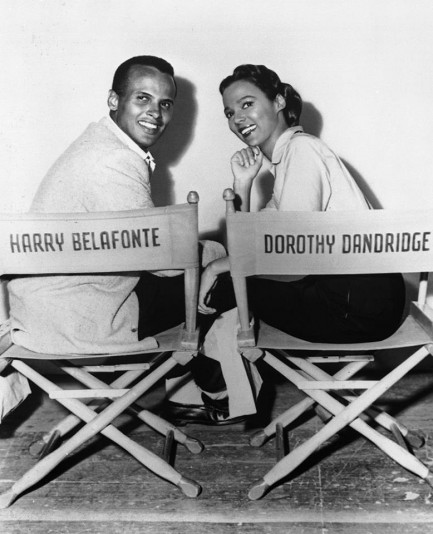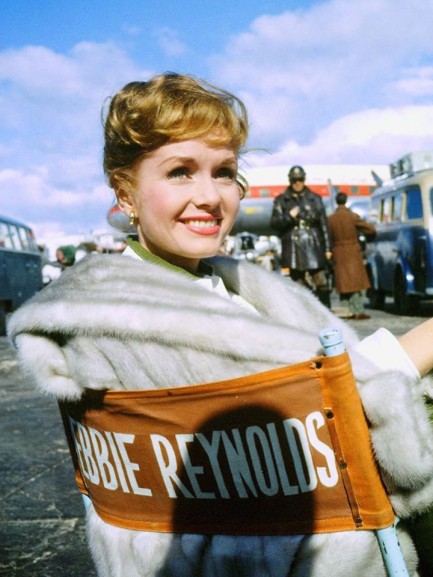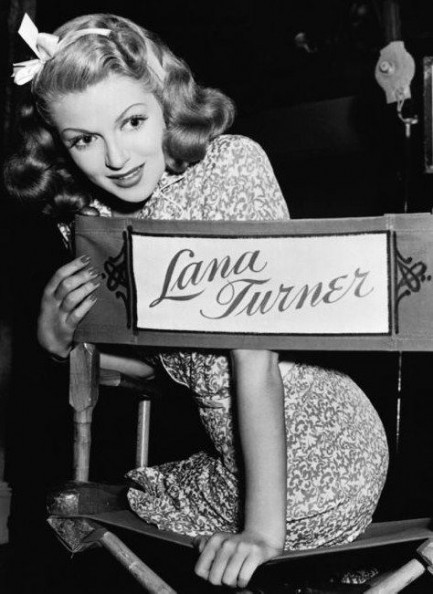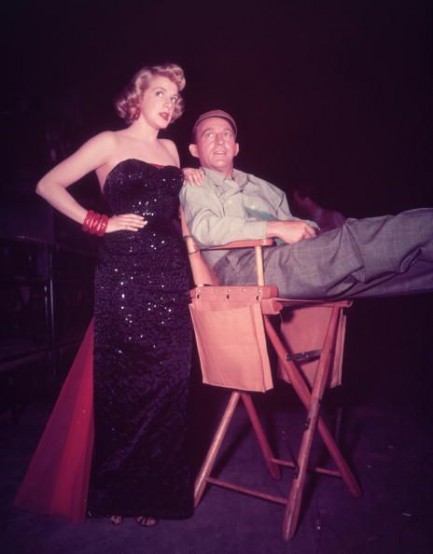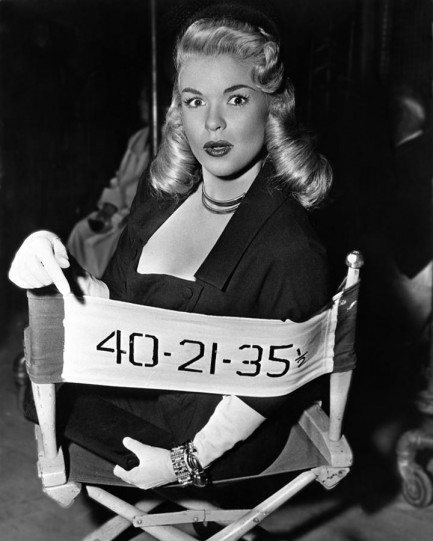 Strange ideas from the minds and lenses of mid-century promo photographers. 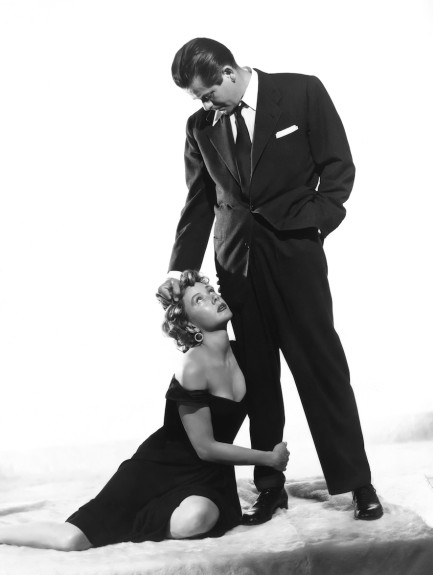 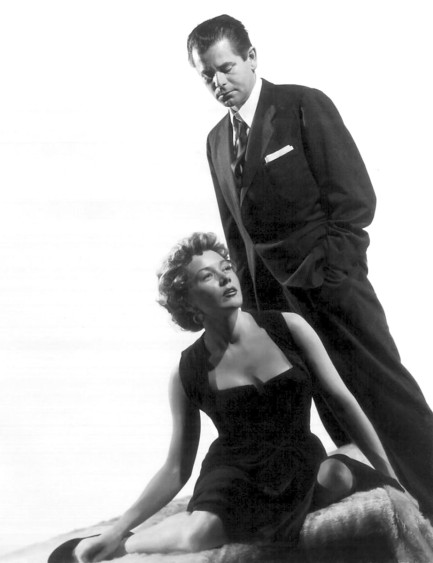 A while back we shared a promo photo of Glenn Ford and Gloria Grahame from 1953's The Big Heat that was meant to imply oral sex (it absolutely was, and you can see for yourself here). We commented on its weirdness, and noted that an actress would probably not be asked or made to pose that way today. The shot got us thinking about whether there were other kneeling promo shots from the mid-century era, and above you see two others from The Big Heat. Below we have more such shots, and while none are as jarring as that previous promo, they're all interesting. We assumed there would be few if any featuring kneeling males, but we found a couple. Even so, there are probably scores more kneeling actresses that we missed. While many of shots took the form they did to highlight the criminal/victim themes in their parent films, you still have to wonder what else—consciously or not—was in the various photograhers' minds. Anyway, just some food for thought this lovely Thursday. Ready, set discuss! 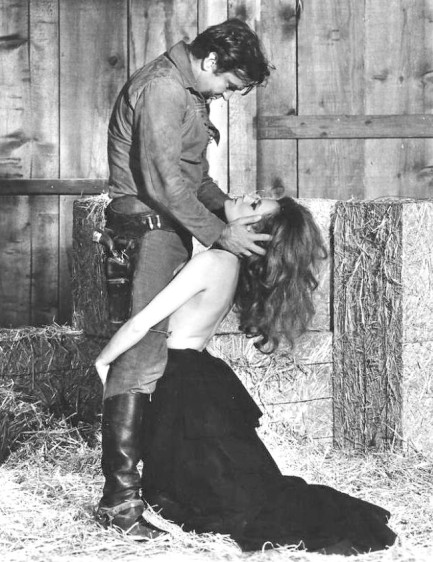 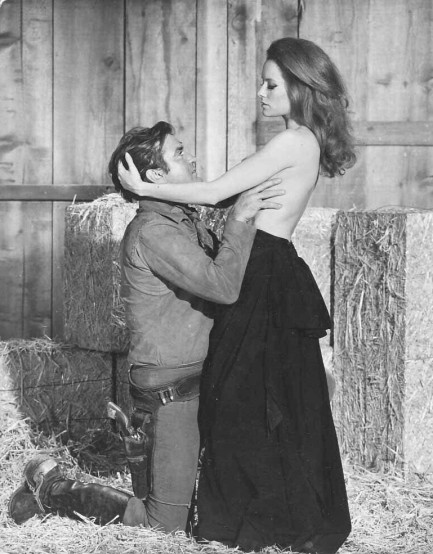 Rod Taylor and Luciana Pauluzzi swap subordinate positions for 1967's Chuka. Rod Taylor and Luciana Pauluzzi swap subordinate positions for 1967's Chuka.
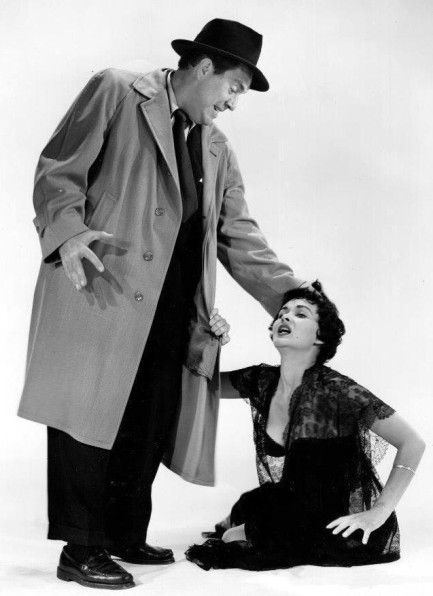 Edmund O'Brien goes for the time honored hair grab on Marla English for 1954's Shield for Murder. Edmund O'Brien goes for the time honored hair grab on Marla English for 1954's Shield for Murder.
 Inger Stevens and Terry Ann Ross for Cry Terror, an adaptation of a novel we talked about a few years ago. Inger Stevens and Terry Ann Ross for Cry Terror, an adaptation of a novel we talked about a few years ago.
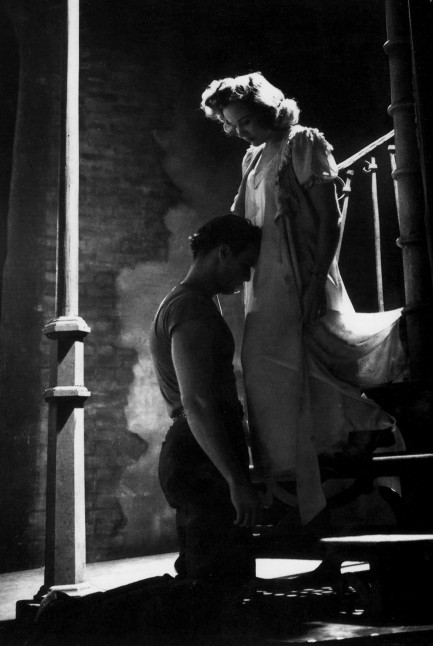 Kim Hunter soothes an overheated Marlon Brando in a promo for 1951's A Streetcar Named Desire. Kim Hunter soothes an overheated Marlon Brando in a promo for 1951's A Streetcar Named Desire.
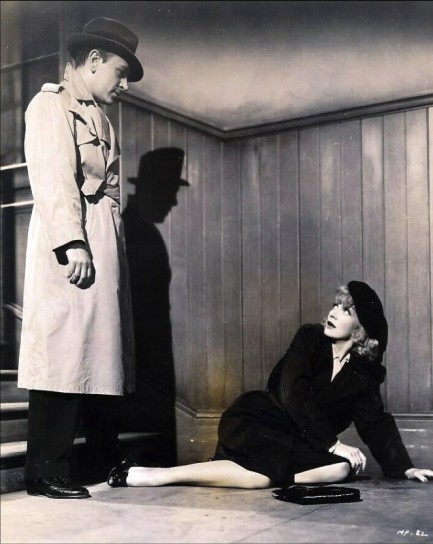 George Raft menaces Marlene Dietrich in the 1941 comedy Manpower. George Raft menaces Marlene Dietrich in the 1941 comedy Manpower.
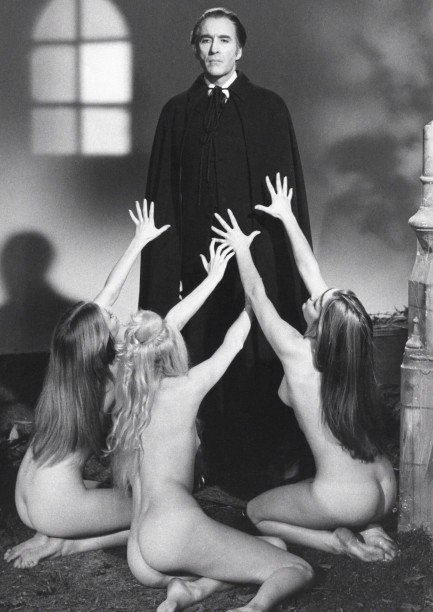 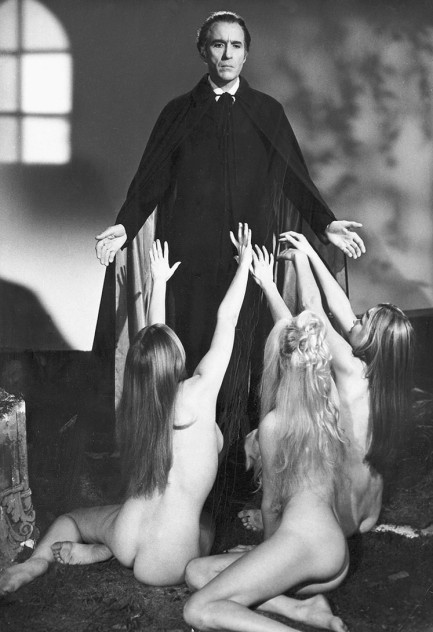 As promos go, these actually make sense. They show three unidentified models mesmerized by vampire Christopher Lee for 1970's Taste the Blood of Dracula. As promos go, these actually make sense. They show three unidentified models mesmerized by vampire Christopher Lee for 1970's Taste the Blood of Dracula.
 Glenn Ford is at it again, this time looming over Rita Hayworth for the 1946 classic Gilda. Glenn Ford is at it again, this time looming over Rita Hayworth for the 1946 classic Gilda. 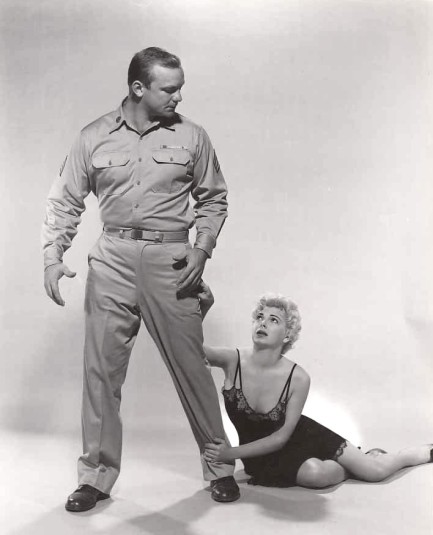 Aldo Ray and Barbara Nichols for 1958's The Naked and the Dead. Aldo Ray and Barbara Nichols for 1958's The Naked and the Dead.
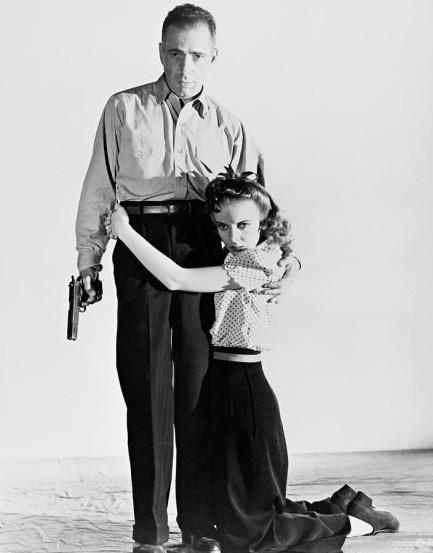 This one shows less domination and more protectiveness, as Humphrey Bogart prepares to defend Ida Lupino for High Sierra, 1941. This one shows less domination and more protectiveness, as Humphrey Bogart prepares to defend Ida Lupino for High Sierra, 1941.
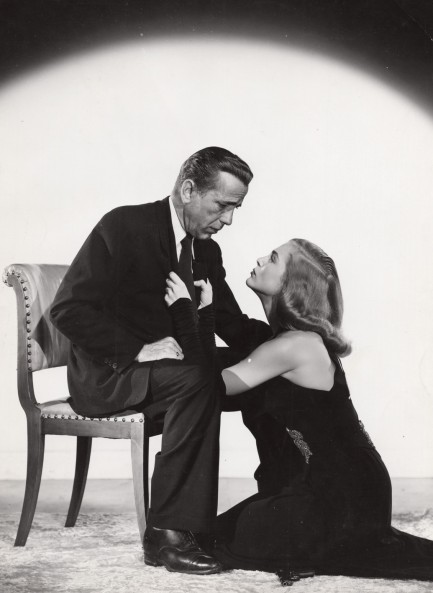 Humphrey once more. Here he's with Lizabeth Scott for Dead Reckoning, 1947. Humphrey once more. Here he's with Lizabeth Scott for Dead Reckoning, 1947.
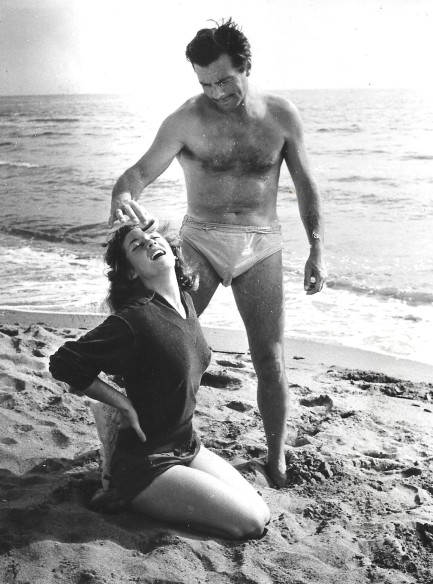 This shot shows Brazilian actress Fiorella Mari with an actor we can't identify in a movie we also can't identify. This shot shows Brazilian actress Fiorella Mari with an actor we can't identify in a movie we also can't identify.
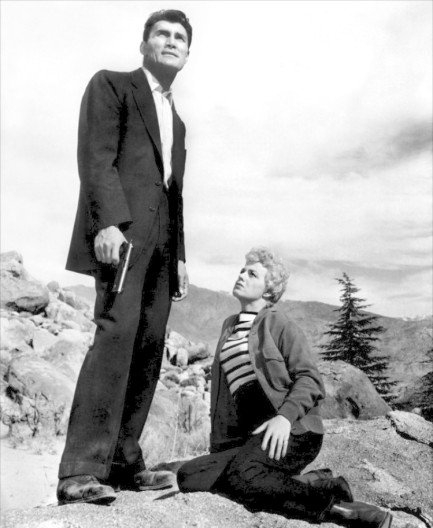 Shelly Winters and Jack Palance climb the highest mountain together for I Died a Thousand Times, 1955. Shelly Winters and Jack Palance climb the highest mountain together for I Died a Thousand Times, 1955.
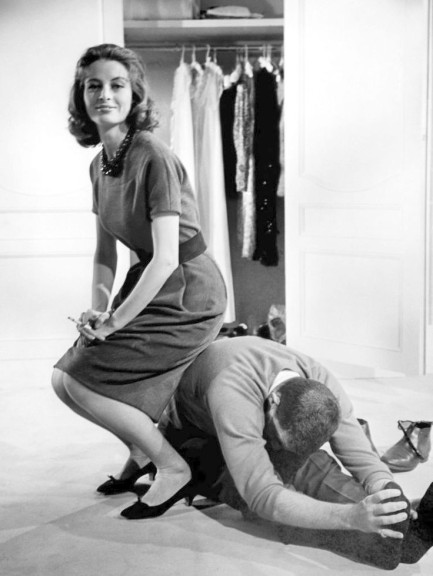 As we said, we didn't find as many examples of kneeling men, but we found this gem—Cappucine makes a seat of director Blake Edwards on the set of The Pink Panther in 1963. Does this count, though? While Edwards is subordinate, he isn't kneeling and it really isn’t a legit promo. As we said, we didn't find as many examples of kneeling men, but we found this gem—Cappucine makes a seat of director Blake Edwards on the set of The Pink Panther in 1963. Does this count, though? While Edwards is subordinate, he isn't kneeling and it really isn’t a legit promo.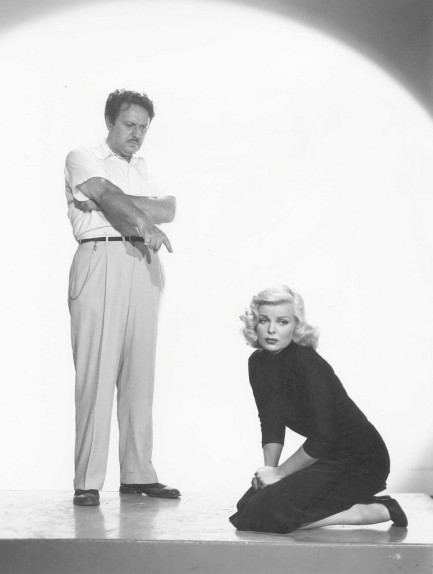 And lastly, in a curious example, Hugo Haas seems to tell Cleo Moore to stay in a shot made for 1953's One Girl's Confession. And lastly, in a curious example, Hugo Haas seems to tell Cleo Moore to stay in a shot made for 1953's One Girl's Confession.
 There are worse boyfriends out there, baby, believe me. I don't know of any offhand. But they must exist. 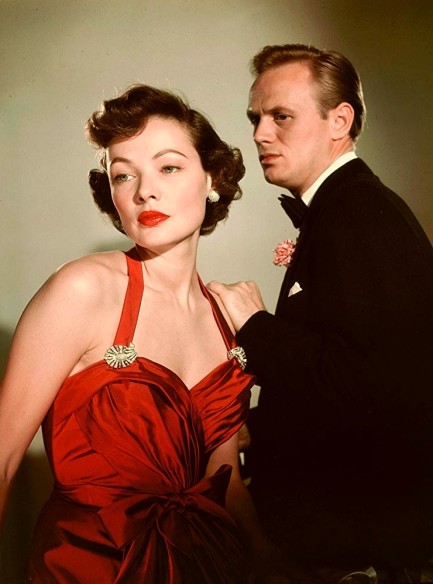
We talked about the revered film noir Night and the City last year and had absolutely nothing new to say about it. Sometimes it's like that. But we'd never seen a color (or possibly colorized) promo image from the movie before, so we've looped back to share this great shot of stars Gene Tierney and Richard Widmark. In the film Widmark is one of the all-time losers, a guy who hustles to get over but has no luck, no momentum, no self-control, and—ultimately—no scruples, even where his girlfriend is concerned. It's a heartbreaking, uncompromising film that typifies the darkness and cynicism of film noir, and there's a reason it's considered a top level entry in the cycle. But back then it was too much for most critics. It premiered—to largely negative reviews—today in 1950.
 Back by popular demand.
Earlier this year we shared an issue of one of the prettiest mid-century celebrity magazines—West Germany's Bravo. We have pages from another issue, published today in 1956. We'll return to this publication a bit later.
 An American con man in London. 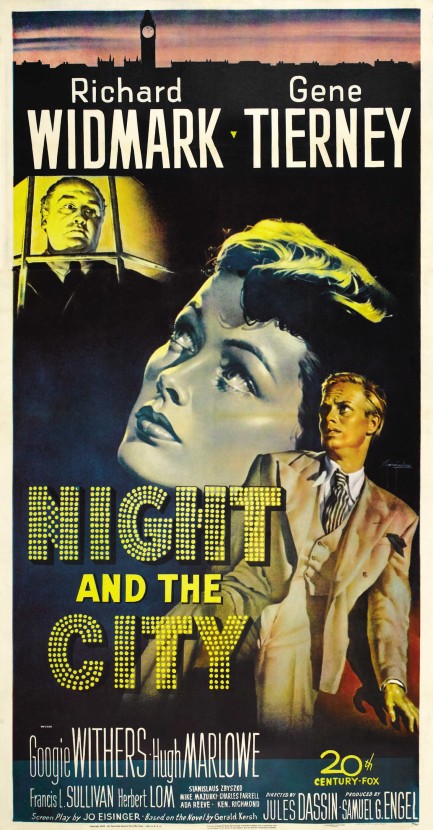
Amazing that we haven't talked in detail about Night and the City yet, but all things in good time, and the time is now. Directed by Jules Dassin, this is one of the top entries in the film noir cycle, featuring Richard Widmark playing an American named Harry Fabian who's trying to hustle his way to riches in postwar London. Being a hustler, he long ago gave up the idea of working a fair job for a fair wage, and instead has been involved in so many spurious get-rich-quick schemes that nobody believes in him anymore. But when he stumbles upon the greatest greco-roman wrestler of all time, he cooks up a plot to take over wrestling promotion in London—and this scheme is a sure thing.
Widmark's performance hinges upon nervous energy and emotional desperation, as he shapes Harry Fabian into one of the greatest characters in the film noir annals, a man who's equal parts pitiable, ridiculous, and dangerous. He's the ultimate noir loser, a man who simply cannot see the forest for the trees. Gene Tierney, who any normal man would worship twenty-four hours a day, plays his girlfriend, beautiful and forbearing, but whose presence Fabian warps into yet another reason to grift his way to a fortune. He feels that a guy in his meager circumstances doesn't deserve her—which completely overlooks the fact that he already has her.
As Widmark tries to hold his caper together the rug is pulled from under him multiple times, yet like any serious hustler he manages to stumble improvisationally onward with lies and wishful thinking. His constant sowing of the seeds of his destruction is hard to watch, because as viewers we can see where and how he's going to fail—or possibly, just possibly, fate will grant him a miracle though he very much deserves to fail. One of the cool things about film noir is that its leads tend to be terribly flawed, but here Widmark is a human clearing house for bad character traits, and the worst of them is the one he has no control over—he was simply born under a bad star.
All in all Night and the City deserves its reputation. We have a few quibbles, but they're purely personal. For example, female leads in these old films often perform a song and Tierney's is atrocious, sadly. And if we were going to be very picky we'd add that it's also hard to buy the wonderful Tierney and the unctuous, work-averse Widmark as a couple, but of course, willing suspension and all that jazz requires that we go with it. The movie works even if Widmark refuses to. Give it a watch. You won't regret it. Night and the City had its world premiere today in 1950. 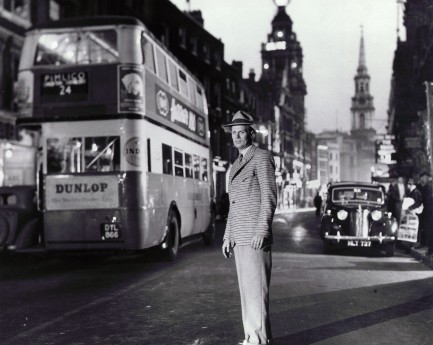 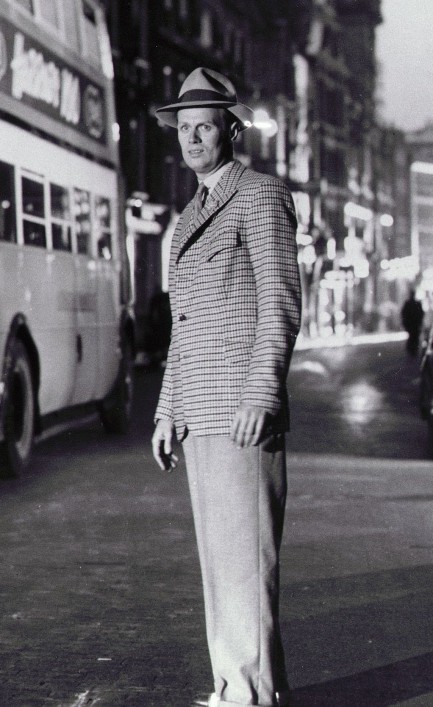 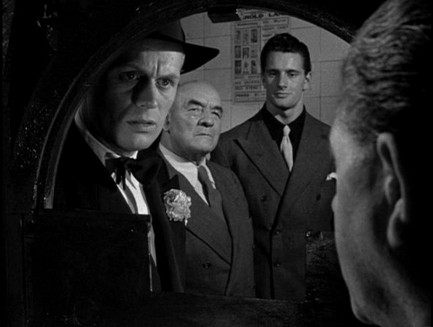 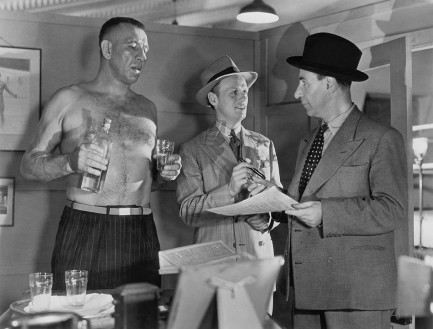 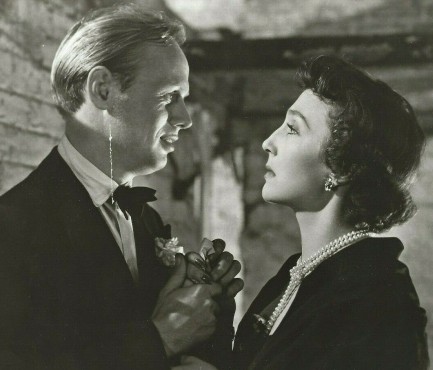 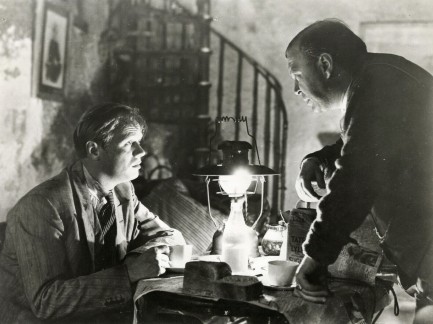 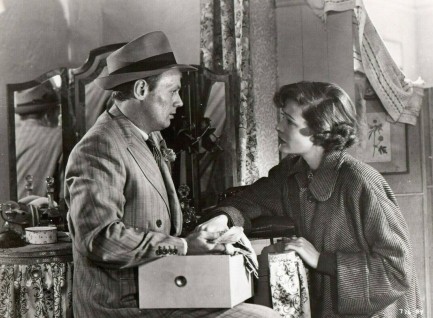  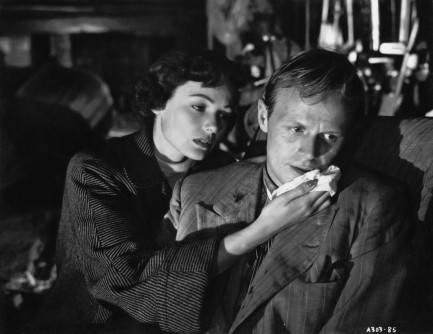 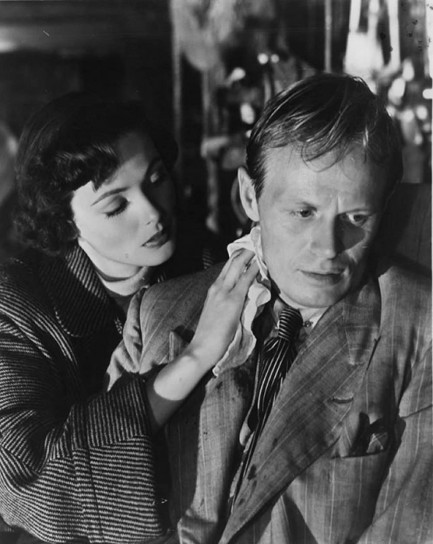 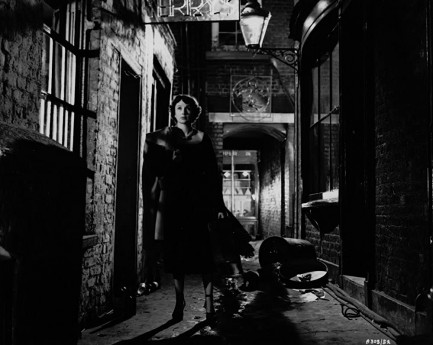  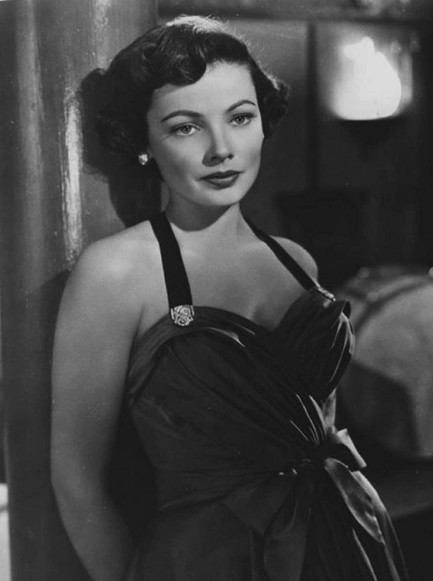 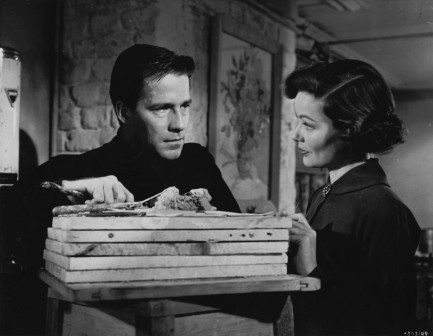 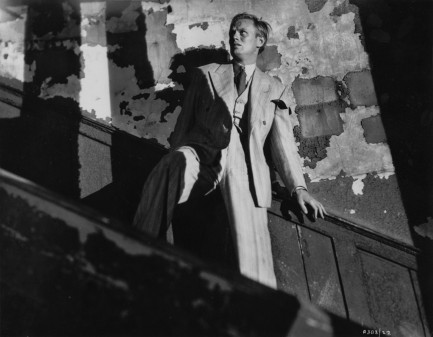 
 An American con man in London. 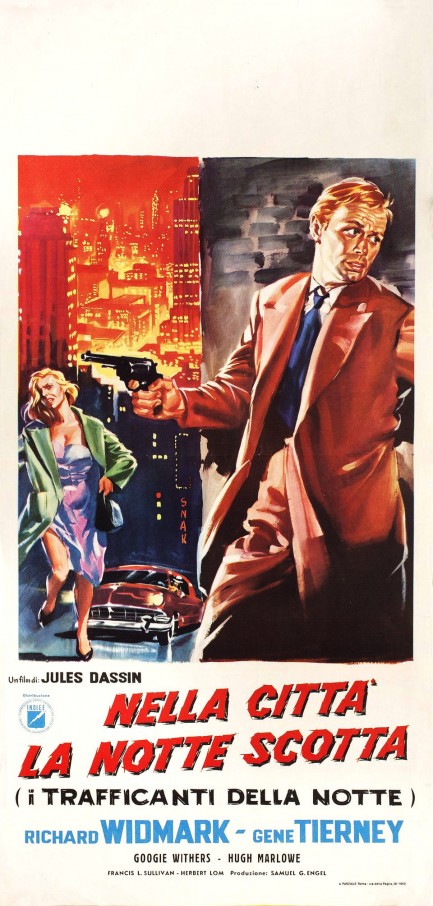
Above: a nice Italian poster for Jules Dassin's 1950 film noir Night and the City. The city is London, which proves to have numerous hazards for shady Richard Widmark. In Italy the movie was called I trafficanti della notte, then retitled Nella citta la notte scotta. You see both on the poster. Earlier promos exist that have only the first title, but we like this later one painted by Renato Casaro the most. It has a beautiful glowing cityscape in the background. Amazing work. We don't know why the title was changed, but the original translates as “the traffickers of the night," while the second is, “in the city the night is hot,” so maybe the distributors simply preferred the more poetic second title. We certainly do. We haven't talked about this movie yet, but we'll get to it a little later. It opened in Italy today in 1951.
 Small town jealousy leads to big time problems in Lupino noir classic. 
Duh DUH duh duh DUH. He has a degree is philosophy...
Duh DUH duh duh DUH. He's broken over thirty bones...
Wait—wrong movie. That's the 1989 Road House, Patrick Swayze's unimprovable existential pugilistic epic. The movie we mean to discuss is the 1948 Road House, which premiered today and starred Ida Lupino, Cornel Wilde, Celeste Holm, and Richard Widmark. Nobody destroys an automobile showroom by driving a monster truck through it. Instead Ida Lupino drives her monster truck through a couple of male egos and teaches them lessons about a woman's right to choose her own life—and her own man. This gimmick-free proto-feminist drama is an excellent example from the film noir genre, and it's exhibit A why Lupino is a legend. She's mighty good in this. Mighty mighty good.
Duh DUH duh duh DUH. She has a degree from the school of hard knocks...
Duh DUH duh duh DUH. She's broken over thirty hearts... 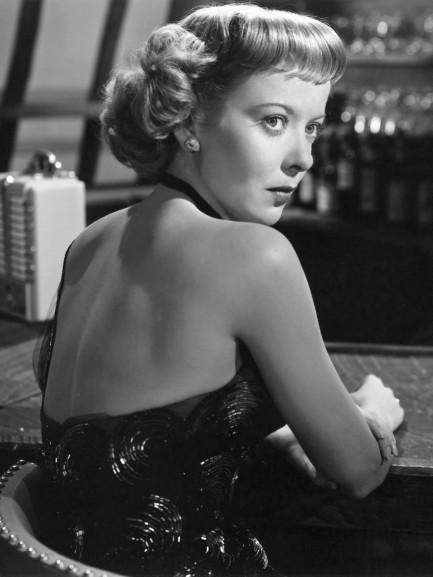 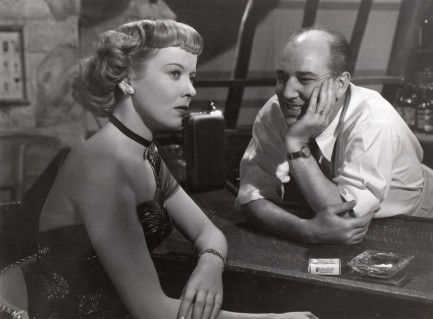 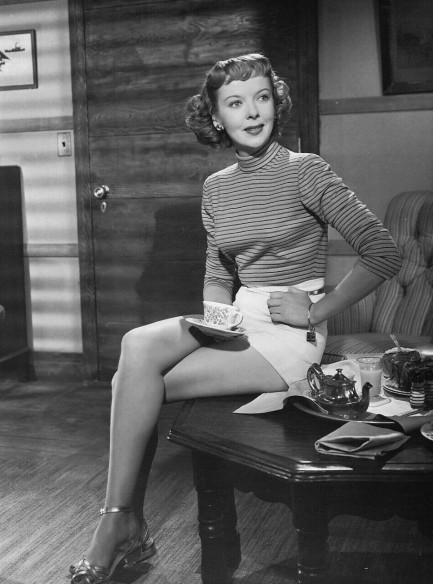 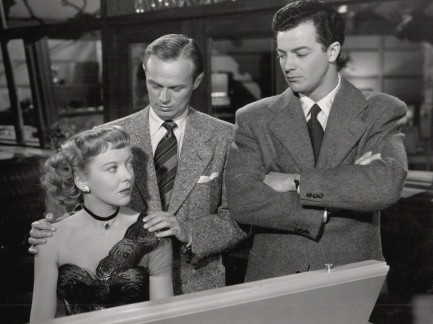 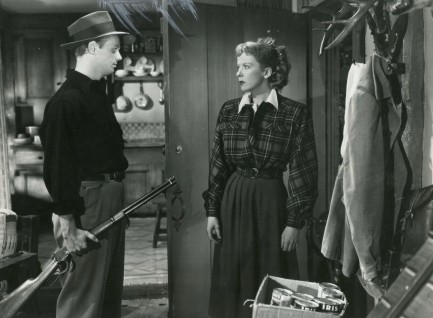 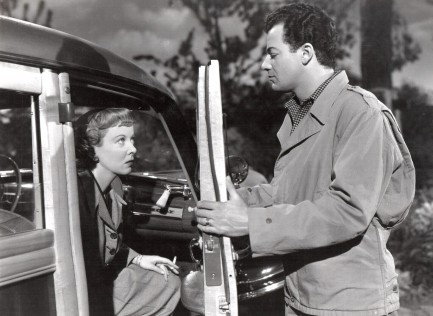 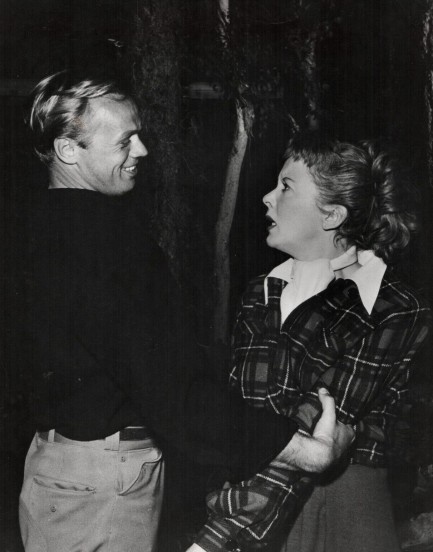 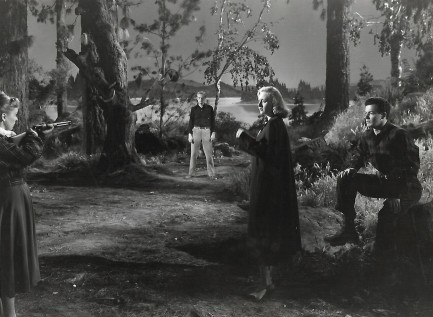 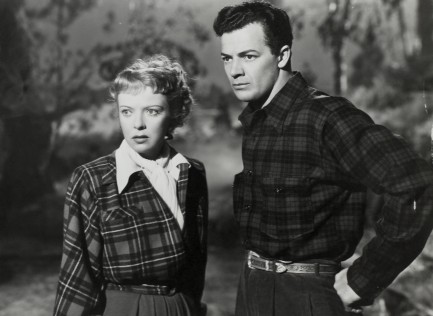 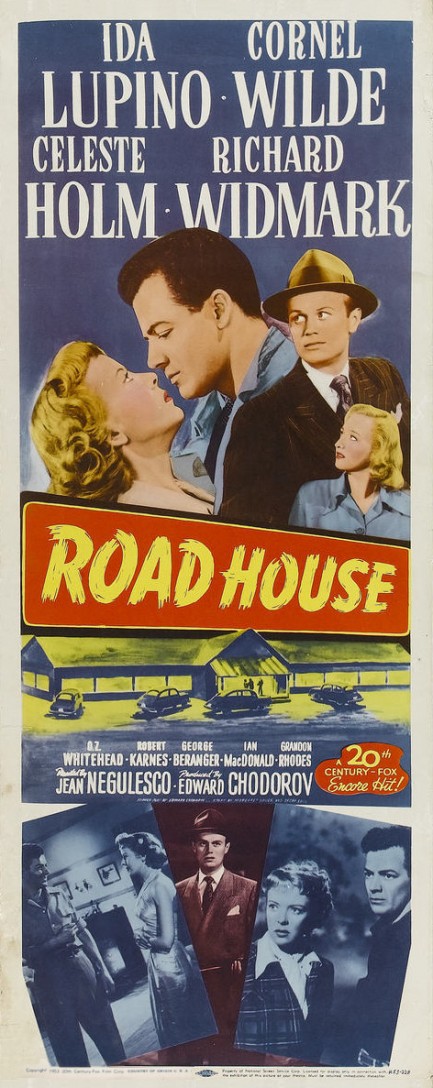
 Monroe finds herself in a room with no space to maneuver. 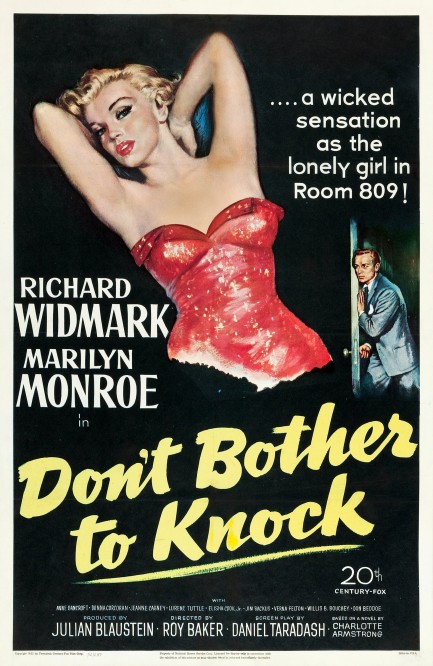
It says plenty about Don't Bother To Knock that we queued it up last night, popcorn and adult beverages in hand, having forgotten that we already watched it several years ago. That has less to do with the overall film than with Marilyn Monroe, but we'll get to that in a minute. The film was based on Charlotte Armstrong's Mischief, which was serialized in 1950 in Good Housekeeping magazine, and deals with a mentally disturbed babysitter watching over a child in a fancy New York City hotel suite. Along with Monroe it stars Richard Widmark and Anne Bancroft, with their three characters suffering respectively from derangement, detachment, and disillusionment—three ailments suggested to be caused or exacerbated by life in the big city. Widmark as a cynical single looking for easy action and Bancroft as a world weary torch singer working the hotel lounge don't have any problems a change in luck wouldn't solve, but the movie revolves around Monroe, who, thirteen credited roles into her career at this point, gets a chance to stretch her range as a nutty nanny in need of a lot more than just kind words to get back on the beam.
Monroe's performance in this heavy drama is tough to judge. To us it feels a bit flat, but contemporary reviewers generally liked it, and it's fair to say it helped her climb that last rung to the superstardom she'd reach a year later with Gentlemen Prefer Blondes. Watch that film and you'll see that, while Don't Bother To Knock asked her to stretch, it did so by requiring that she suppress her natural charisma. That's no easy trick for an actor, let alone someone as incandescent as her, and that, in short, is probably why we forgot we'd already watched the movie. Monroe was so big in her other performances that this flick went down the memory hole. Her iconic movies feel as if they could only have starred her. This one feels like it could have starred anyone. Monroe just isn't Monroe in it. But that probably means her performance is a success. Watching it afresh, we can tell you it's certainly a must for Marilyn fans, and will probably work for vintage film fans of all types. But those unschooled in the oldies might walk away from this effort thinking, Meh, I don't get all the Monroe fuss. But the fuss was appropriate and deserved. Don't Bother To Knock—not a film noir as labeled on many sites, by the way—premiered today in 1953. 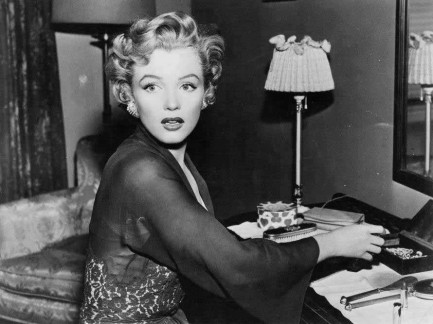 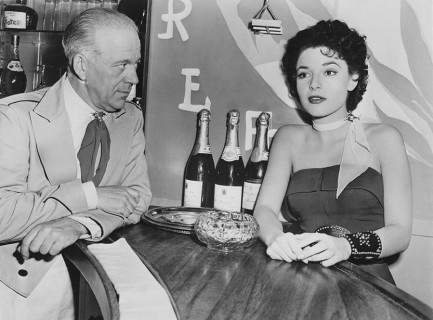 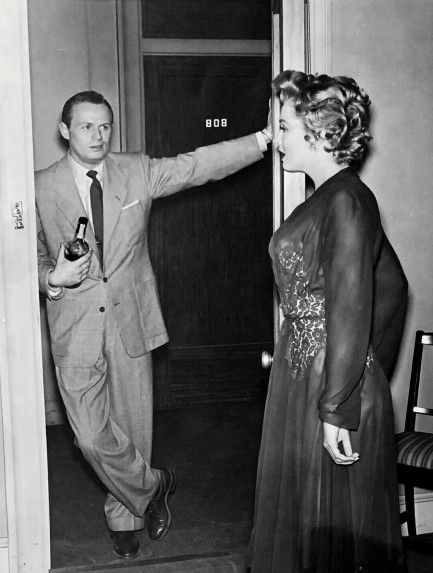 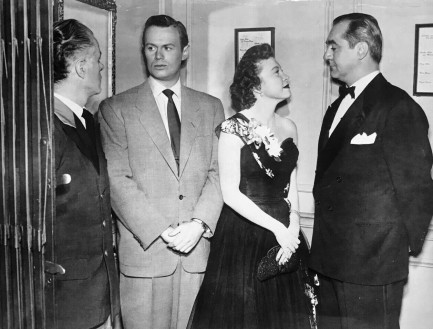 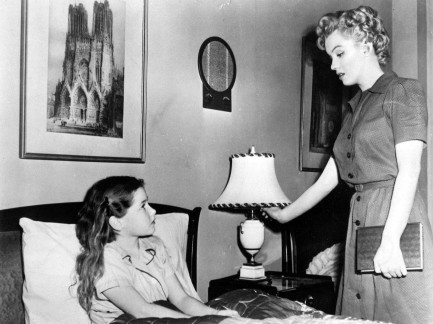 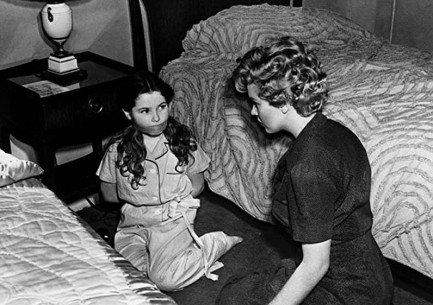 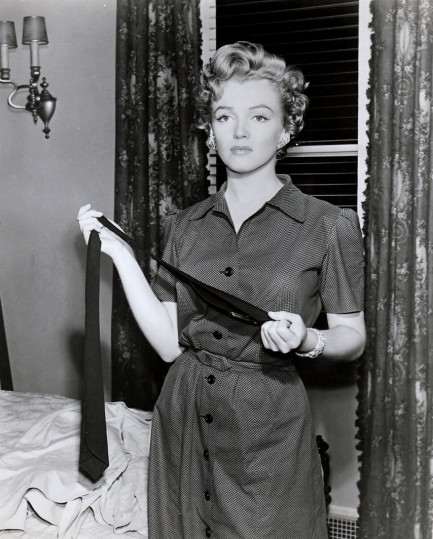  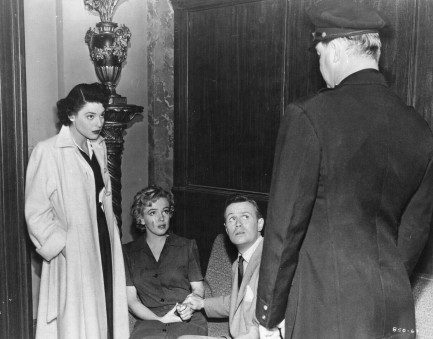 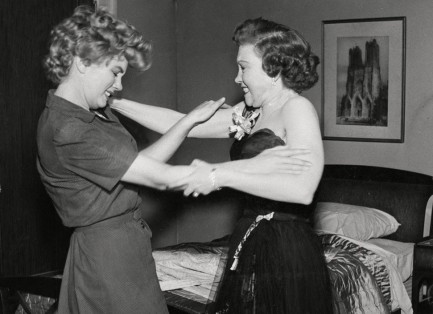 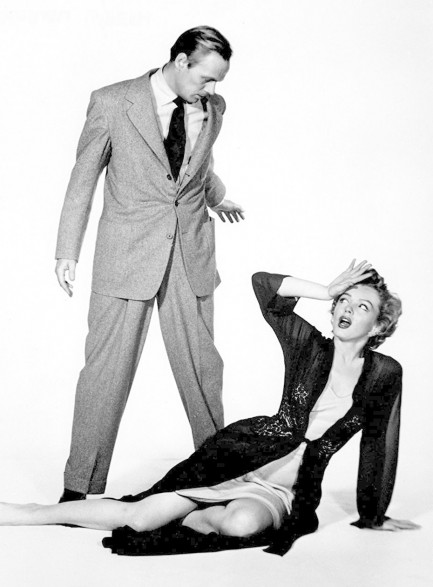 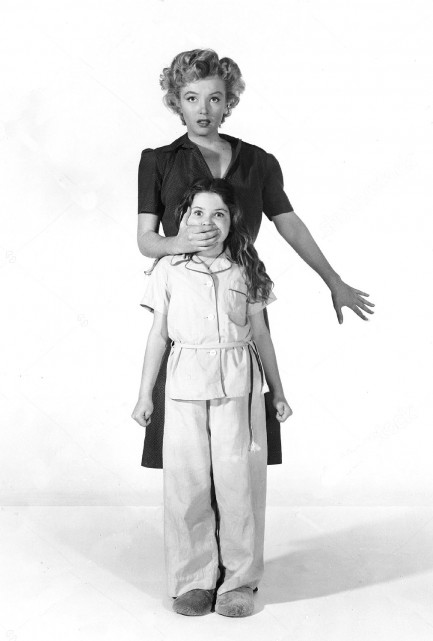
 They always get the best seat in the house.
Below, a collection of film stars, in Hollywood and other places, looking large and in charge while seated in director's chairs. In panel three the actress in the “Bonanza's guest” chair is Karen Sharpe. We don't expect you'll need help with the others, but if so our keywords list them in order.

|
 |

The headlines that mattered yesteryear.
2003—Hope Dies
Film legend Bob Hope dies of pneumonia two months after celebrating his 100th birthday. 1945—Churchill Given the Sack
In spite of admiring Winston Churchill as a great wartime leader, Britons elect
Clement Attlee the nation's new prime minister in a sweeping victory for the Labour Party over the Conservatives. 1952—Evita Peron Dies
Eva Duarte de Peron, aka Evita, wife of the president of the Argentine Republic, dies from cancer at age 33. Evita had brought the working classes into a position of political power never witnessed before, but was hated by the nation's powerful military class. She is lain to rest in Milan, Italy in a secret grave under a nun's name, but is eventually returned to Argentina for reburial beside her husband in 1974. 1943—Mussolini Calls It Quits
Italian dictator Benito Mussolini steps down as head of the armed forces and the government. It soon becomes clear that Il Duce did not relinquish power voluntarily, but was forced to resign after former Fascist colleagues turned against him. He is later installed by Germany as leader of the Italian Social Republic in the north of the country, but is killed by partisans in 1945.
|

|
|

It's easy. We have an uploader that makes it a snap. Use it to submit your art, text, header, and subhead. Your post can be funny, serious, or anything in between, as long as it's vintage pulp. You'll get a byline and experience the fleeting pride of free authorship. We'll edit your post for typos, but the rest is up to you. Click here to give us your best shot.

|
|




 Rod Taylor and Luciana Pauluzzi swap subordinate positions for 1967's Chuka.
Rod Taylor and Luciana Pauluzzi swap subordinate positions for 1967's Chuka. Edmund O'Brien goes for the time honored hair grab on Marla English for 1954's Shield for Murder.
Edmund O'Brien goes for the time honored hair grab on Marla English for 1954's Shield for Murder.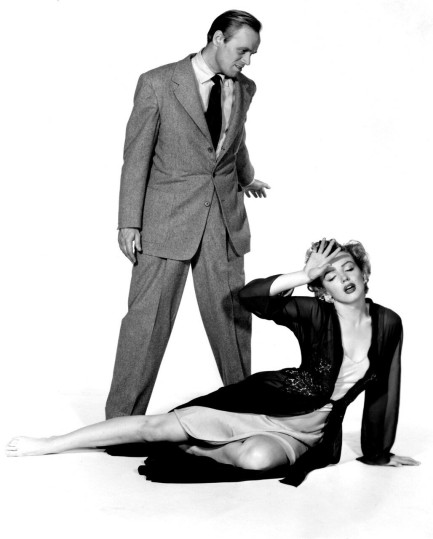 Marilyn Monroe swoons as Richard Widmark snarls for Don't Bother To Knock, 1952.
Marilyn Monroe swoons as Richard Widmark snarls for Don't Bother To Knock, 1952. Inger Stevens and Terry Ann Ross for Cry Terror, an adaptation of a novel we talked about a few years ago.
Inger Stevens and Terry Ann Ross for Cry Terror, an adaptation of a novel we talked about a few years ago. Kim Hunter soothes an overheated Marlon Brando in a promo for 1951's A Streetcar Named Desire.
Kim Hunter soothes an overheated Marlon Brando in a promo for 1951's A Streetcar Named Desire. George Raft menaces Marlene Dietrich in the 1941 comedy Manpower.
George Raft menaces Marlene Dietrich in the 1941 comedy Manpower.
 As promos go, these actually make sense. They show three unidentified models mesmerized by vampire Christopher Lee for 1970's Taste the Blood of Dracula.
As promos go, these actually make sense. They show three unidentified models mesmerized by vampire Christopher Lee for 1970's Taste the Blood of Dracula. Glenn Ford is at it again, this time looming over Rita Hayworth for the 1946 classic Gilda.
Glenn Ford is at it again, this time looming over Rita Hayworth for the 1946 classic Gilda. Aldo Ray and Barbara Nichols for 1958's The Naked and the Dead.
Aldo Ray and Barbara Nichols for 1958's The Naked and the Dead. This one shows less domination and more protectiveness, as Humphrey Bogart prepares to defend Ida Lupino for High Sierra, 1941.
This one shows less domination and more protectiveness, as Humphrey Bogart prepares to defend Ida Lupino for High Sierra, 1941. Humphrey once more. Here he's with Lizabeth Scott for Dead Reckoning, 1947.
Humphrey once more. Here he's with Lizabeth Scott for Dead Reckoning, 1947. This shot shows Brazilian actress Fiorella Mari with an actor we can't identify in a movie we also can't identify.
This shot shows Brazilian actress Fiorella Mari with an actor we can't identify in a movie we also can't identify. Shelly Winters and Jack Palance climb the highest mountain together for I Died a Thousand Times, 1955.
Shelly Winters and Jack Palance climb the highest mountain together for I Died a Thousand Times, 1955. As we said, we didn't find as many examples of kneeling men, but we found this gem—Cappucine makes a seat of director Blake Edwards on the set of The Pink Panther in 1963. Does this count, though? While Edwards is subordinate, he isn't kneeling and it really isn’t a legit promo.
As we said, we didn't find as many examples of kneeling men, but we found this gem—Cappucine makes a seat of director Blake Edwards on the set of The Pink Panther in 1963. Does this count, though? While Edwards is subordinate, he isn't kneeling and it really isn’t a legit promo. And lastly, in a curious example, Hugo Haas seems to tell Cleo Moore to stay in a shot made for 1953's One Girl's Confession.
And lastly, in a curious example, Hugo Haas seems to tell Cleo Moore to stay in a shot made for 1953's One Girl's Confession. 


